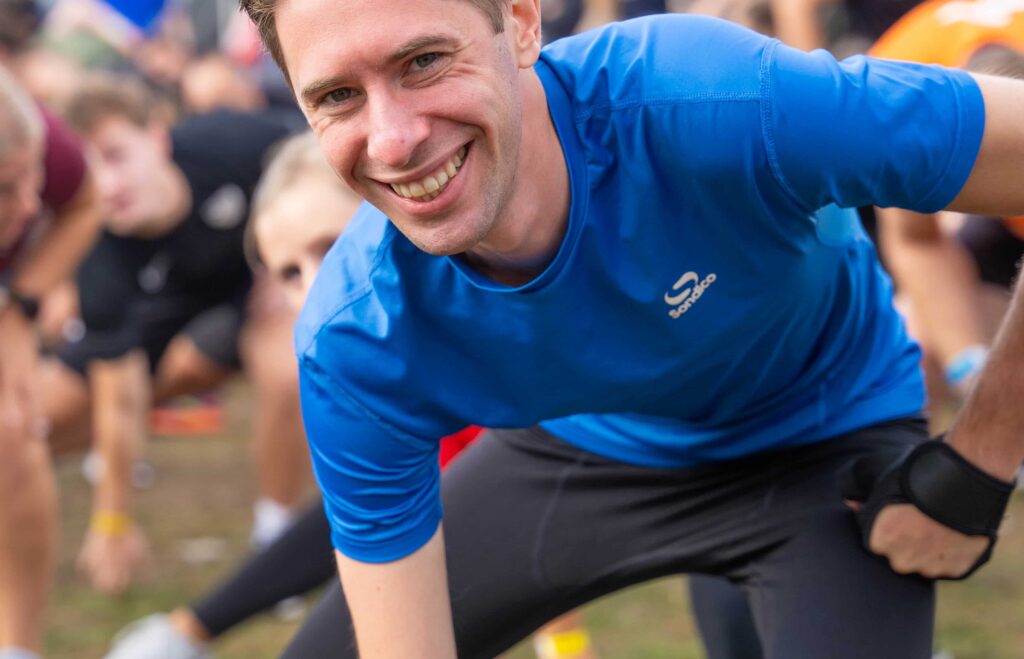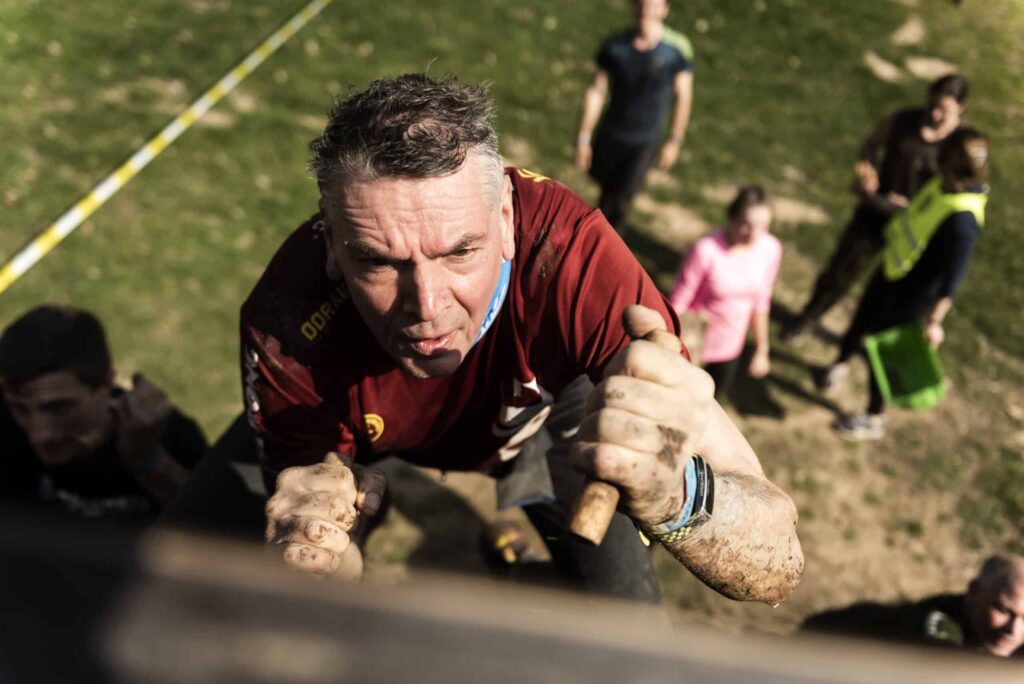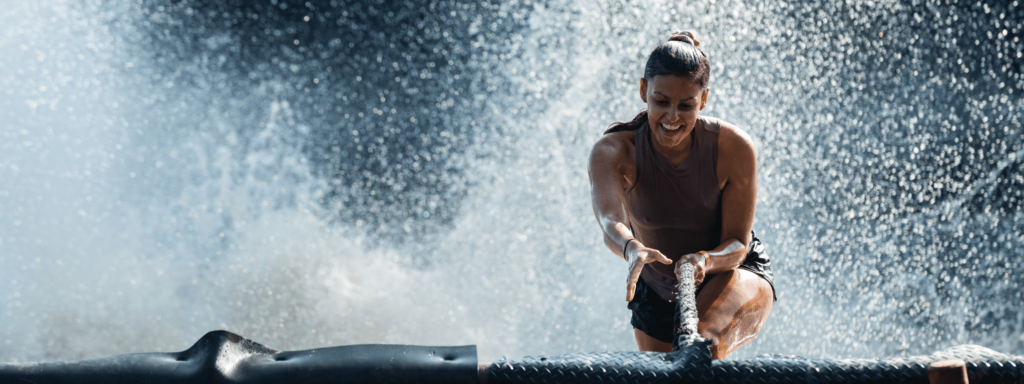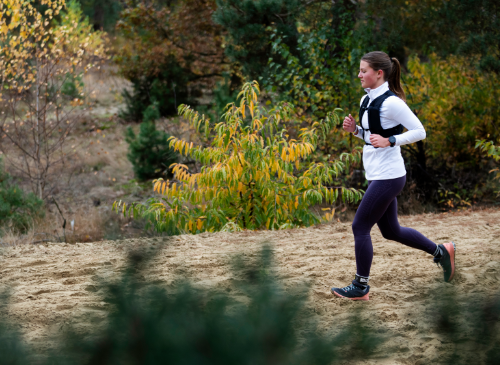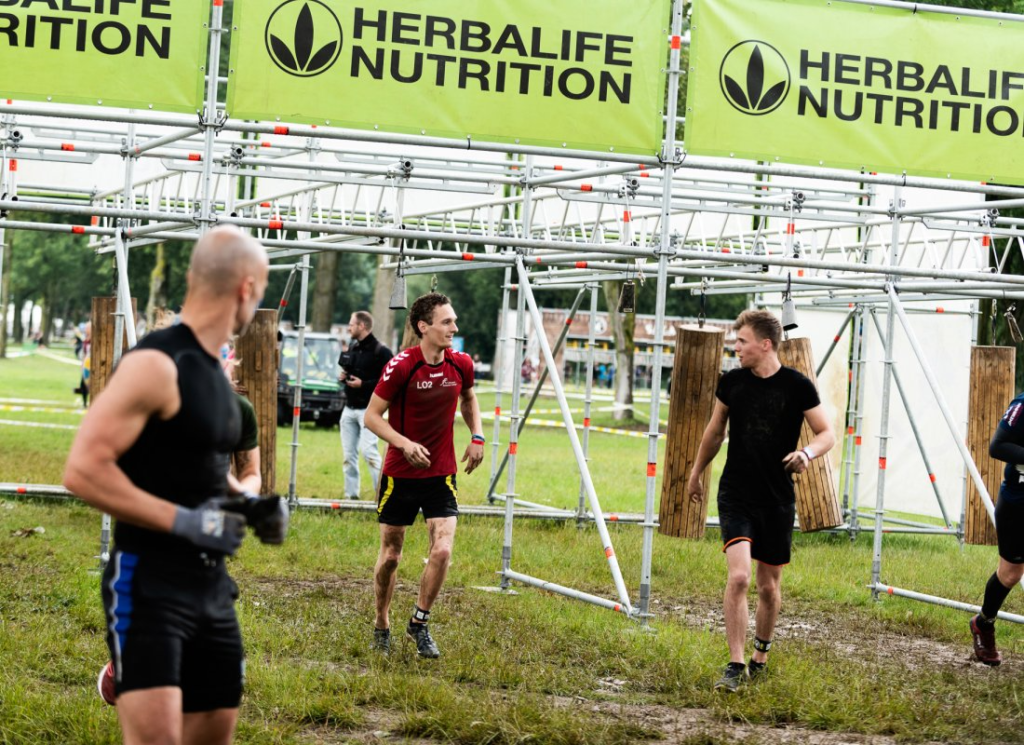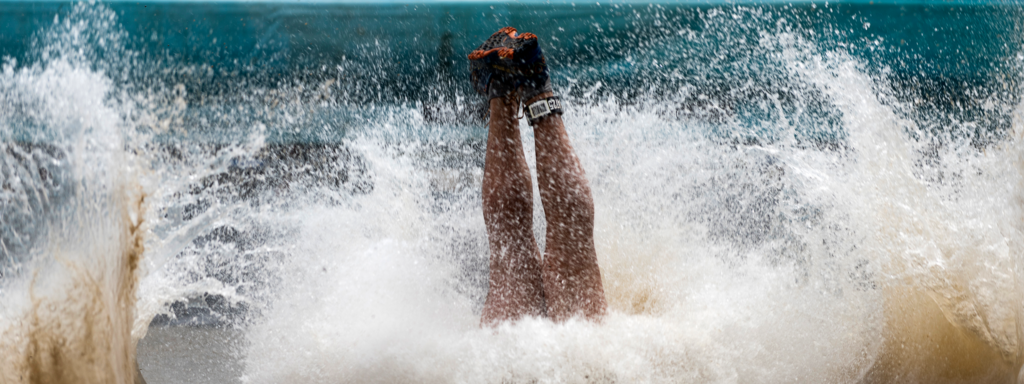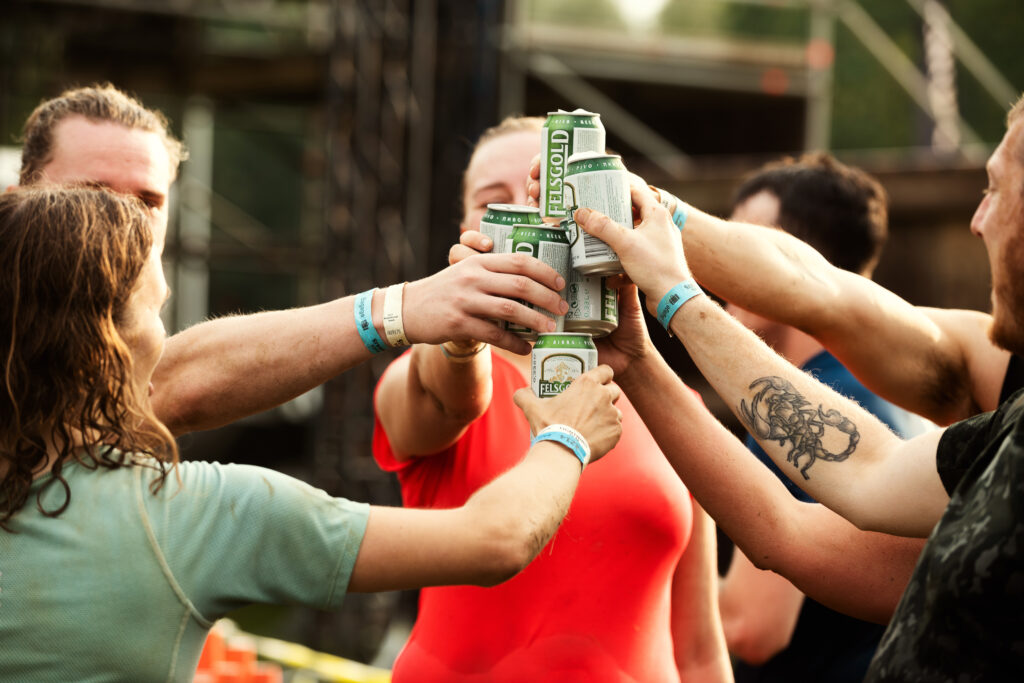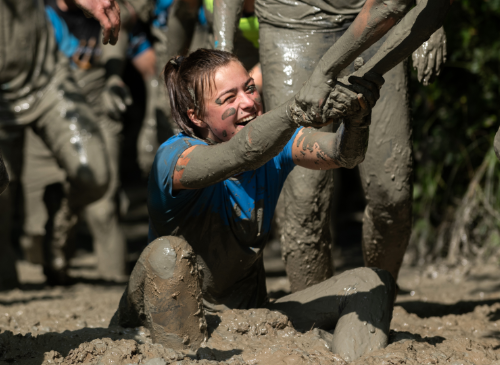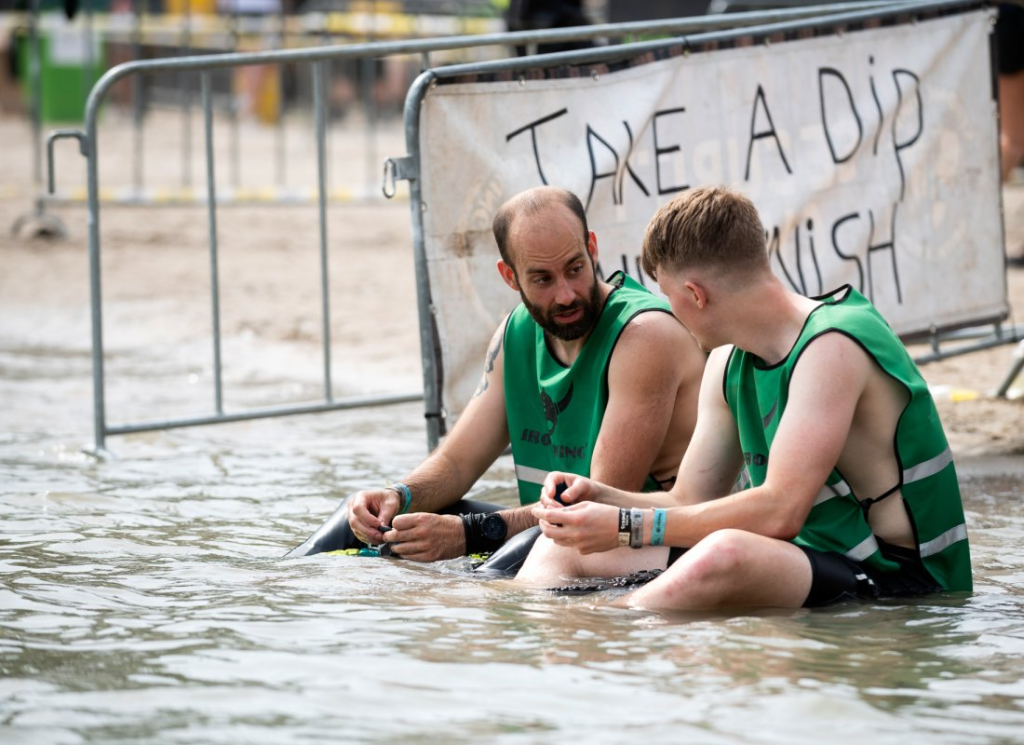Kopje onder in ijskoud water? Heerlijk! Tijdens de Water Edities van Strong Viking kom je het obstakel ‘The Iceman’ tegen. Geïnspireerd door de Wim Hof Methode, is het de uitdaging om het ijskoude water te trotseren. Maar hoe doe je dit het beste? De Wim Hof ademhalingsmethode kan je helpen om zowel mentaal als fysiek voorbereid te zijn. Maar wie is Wim Hof en hoe werkt zijn ademhalingsmethode nou eigenlijk? En is een ijsbad wel goed voor je? In dit artikel lees je alles over Wim Hof, het ‘The Iceman’ obstakel en hoe je je kunt voorbereiden.
Inhoudsopgave
Strong Viking obstakel: The Iceman
Als je tijdens de water editie van Strong Viking 13km of meer loopt, kom je het ijskoude obstakel ‘The Iceman’ tegen. Dit obstakel is een echte test voor je doorzettingsvermogen en mentale kracht. Elk weekend wordt er maar liefst 3200 kilogram aan ijsblokjes gebruikt om het water richting het vriespunt te brengen, dat staat gelijk aan het gewicht van 2-3 kleine auto’s! Als je eenmaal door het water ploegt, voel je de adrenaline rush door je lichaam gieren.
Bij dit obstakel staan er Strong Viking-members om je aan te moedigen, mentaal te ondersteunen en om er voor te zorgen dat je veilig blijft. Wees dus niet bang dat je na het kopje onder niet meer boven komt.
Strong Viking x Wim Hof
Op de banner van ‘The Iceman’ zie je misschien een bekend gezicht: Wim Hof. Wim Hof is de koning van extreme kou en wordt daarom ook wel The Iceman genoemd. Hij heeft een ademhalingsmethode ontwikkeld die het een stuk makkelijker maakt om deze kou te doorstaan. Hieronder gaan we verder in op deze methode van Wim Hof en hoe jij het toe kunt passen tijdens Strong Viking.
Wim Hof ademhalingsmethode
De Wim Hof methode: je hebt er vast wel eens van gehoord. Het komt neer op een unieke combinatie van ademhalingstechniek, kou en mentale focus, bedacht door de Nederlandse durfal Wim Hof, ook wel bekend als “The Iceman.”
Voordelen Wim Hof Methode
Mensen die de Wim Hof-methode beoefenen, melden allerlei voordelen, zoals een sterkere weerstand, meer energie, minder stress, scherpere focus en een beter humeur. Er is wetenschappelijk bewijs dat deze voordelen ondersteunt, maar er wordt nog steeds onderzoek gedaan.
Het is belangrijk om de Wim Hof-methode met zorg te beoefenen, vooral als je gezondheidsproblemen hebt. Begin onder begeleiding van een gecertificeerde instructeur of via officiële cursussen, zodat je veilig en effectief kunt profiteren van de methode.
Voorbereiding op ‘The Iceman’
Om je voor te bereiden op het ijskoude obstakel, is het belangrijk om je lichaam te laten wennen aan kou. Begin met een simpele maar effectieve oefening: neem een koude douche. Zet de temperatuur van je douche langzaam lager en focus op je ademhaling.
Wanneer je de temperatuur verlaagt, merk je dat je ademhaling sneller wordt. Probeer deze ademhaling onder controle te krijgen door diep en rustig te ademen. Het doel is om je ademhaling te kalmeren, zelfs als de kou je lichaam prikkelt.
Als je ademhaling onder controle is, blijf dan een minuut onder de koude straal staan. Het is niet noodzakelijk om de koude straal op je hoofd gericht te hebben. Begin met een comfortabele temperatuur en verlaag deze geleidelijk elke dag. Na een week zul je merken dat je sterker wordt en dat je rusthartslag daalt.
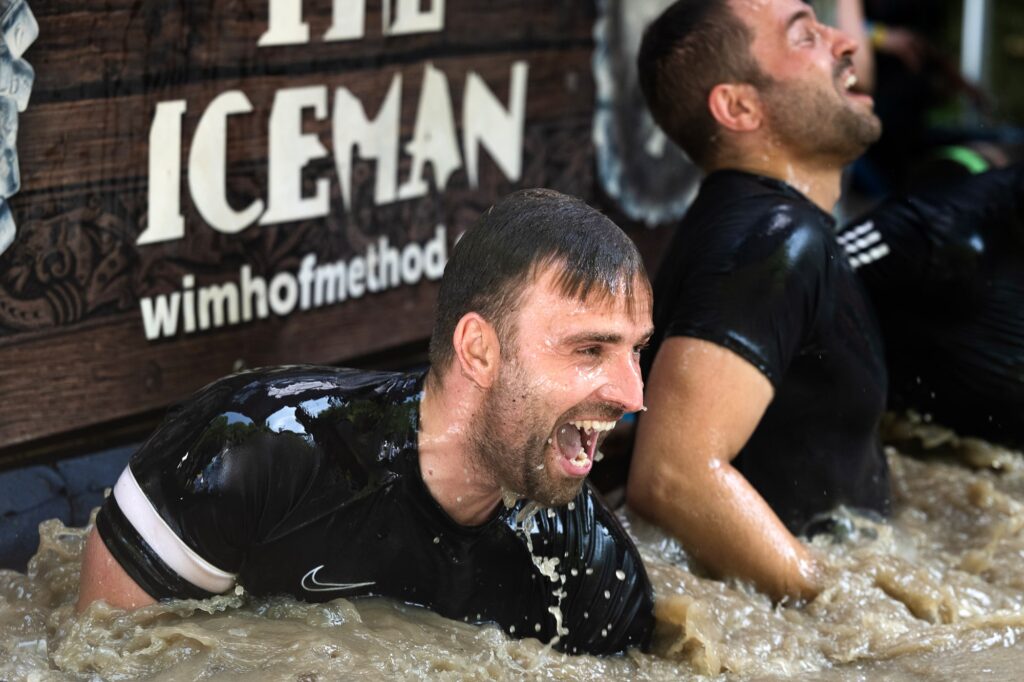
Zo overwin jij ‘The Iceman’
We hebben uitgelegd wat het obstakel ‘The Iceman’ inhoudt en waar de Wim Hof methode over gaat. Nu is het tijd om erachter te komen hoe jij deze methode kunt inzetten om het ijskoude obstakel te overwinnen. Wim Hof heeft speciaal voor Strong Viking een video opgenomen om jullie uit te leggen hoe je het beste deze ijskoude duik kunt nemen.
Wanneer je het water nadert, zorg ervoor dat je ontspannen bent, zodat je de zuurstoftoevoer kunt optimaliseren. Loop rustig en blijf kalm, want ontspanning helpt de kou te verdragen. Als je gespannen bent, zal er mindere zuurstof binnenkomen en wordt het moeilijker om de kou te trotseren. Als je het 70 centimeter diepe water instapt, weet je lichaam onmiddellijk wat het met de verzamelde zuurstof moet doen: zich aanpassen aan de kou. Er komt adrenaline vrij, dit geeft jou de boost om kopje onder te gaan en onder het obstakel door te duiken.
Voordelen van een ijsbad nemen
Een ijsbad nemen wordt steeds populairder. Je kunt zelfs opblaasbare badjes kopen die er speciaal voor zijn gemaakt! Je kunt er dus voor kiezen om echt jezelf onder te dompelen in een (speciaal) bad, maar om te beginnen kun je ook gewoon voor een koude douche kiezen.
Dat het populair is, valt niet te ontkennen. Uit onderzoek blijkt dat regelmatig een ijsbad nemen namelijk veel voordelen met zich mee brengt!
Sneller herstel: Kou kan helpen om spierpijn en zwelling na het sporten te verminderen, waardoor je sneller weer fit bent.
Betere bloedsomloop: Koude temperaturen helpen je bloedvaten te openen en sluiten, wat de bloedcirculatie kan verbeteren en afvalstoffen uit je spieren kan verwijderen.
Minder ontsteking: IJs helpt ontstekingen te verminderen door de bloedvaten te verkleinen en de zwelling te beperken.
Sterker mentaal: Het nemen van een ijsbad kan je mentale kracht vergroten doordat je leert omgaan met ongemak.
Gezonder immuunsysteem: Regelmatig ijsbaden kan je immuunsysteem een boost geven door je lichaam te helpen meer afweercellen te maken.
Betere slaap: Sommige mensen slapen beter na een ijsbad omdat het je lichaam helpt ontspannen en je temperatuur reguleert.
Meer energie: IJsbaden kunnen je een energiek gevoel geven doordat je lichaam endorfines aanmaakt.
Vergeet niet voorzichtig te zijn en met een arts te overleggen als je gezondheidsproblemen hebt.
Ga de koude uitdaging aan!
Wil jij de koude uitdaging aan gaan? Haal dan nu je tickets voor de volgende Strong Viking Water Editie! Zorg er voor dat je goed voorbereid bent met bovenstaande tips en download het obstacle run trainingsschema om jezelf klaar te stomen. Oorah!
